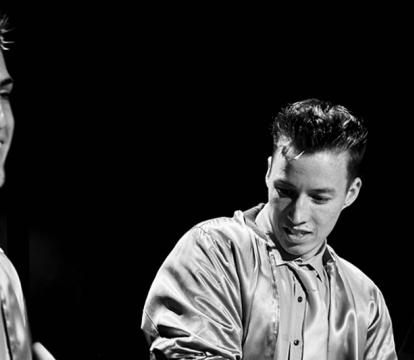How to stage West Side Story in 2019
Two-time Tony Award-nominated choreographer and West Side Story heir Joey McKneely chats representation, relevance and remaining true to the original.
Opera Australia's West Side Story plays in the Joan Sutherland Theatre until Sunday, October 6.
In 1989, Joey McKneely was one of the dancers in Jerome Robbins’ Broadway, a stage anthology comprising numbers from shows that Robbins had directed and choreographed such as On the Town and The King and I. Included in the line-up was a suite of dances from West Side Story.
Working with Robbins on his iconic choreography was an unforgettable experience for McKneely, who, 30 years later, helms West Side Story at the Sydney Opera House, after success around the world.
“I spent six months in the rehearsal studio with him learning all of his Broadway choreography, not just West Side,” says McKneely. “It showed me the value of [creating] choreography from character. How he worked with dancers: mould the dancers to the choreography, not the choreography to the dancer. It really was inspirational, the entire experience.”
Original choreography to a tee
In his production of West Side Story, McKneely recreates Robbins’ explosive, finger-snapping, ballet-infused jazz choreography to a tee. Over the years, some directors have opted for different dance moves. Ivo van Hove’s highly anticipated new Broadway production, which previews from December, will feature new choreography by avant-garde Belgian dance-maker Anne Teresa De Keersmaeker. But as far as McKneely is concerned, if you want to replace Robbins’ choreography, then “write a new musical”.
“I believe Robbins' original choreography is essential to the piece. It is part of the storytelling, the plot, the characters,” he says. “Yes, you could do it with different choreography, but why? Just to be different? It's like changing the lyrics, or changing dialogue. Would you do this? There are very few shows where choreography is the signature of the piece, where the show wouldn't be memorable without it. A Chorus Line is one of those shows. And West Side Story is even more important because the original choreography really is part of its DNA.”
McKneely has made a few slight variations – “higher kicks, higher jumps, an extra count here, a shift of pattern there – all to accentuate the dynamics of the choreography more, or to accommodate the new set that we use for the show,” he says. “And I do believe I take a much stricter approach to everyone dancing at the same level, as opposed to each character interpreting the choreography for themselves.”
His direction is a bigger departure from Robbins’ original, which took “more of a presentational, musical comedy approach”, as McKneely puts it. He has approached the material on a more naturalistic, emotional level than Robbins did, to make the trauma of the plot affect the characters as it would in real life.
... the original choreography really is part of its DNA.
Somehow…someday
Conceived, directed and choreographed by Robbins, West Side Story was created with a stellar team: composer Leonard Bernstein, book writer Arthur Laurents, and fledgling lyricist Stephen Sondheim. Updating Romeo and Juliet to 1950s New York, they set the tragic story against the gritty backdrop of rival gangs – the white Polish-American Sharks and the Puerto Rican Jets.
60 years since it premiered on Broadway in 1957, it remains one of the greatest musicals ever written, its sophisticated, eclectic score, electrifying choreography, vivid lyrics and heart-breaking story as powerful as ever. Sadly, its themes around immigration, racial prejudice, suspicion of “others”, and gun control, are even more topical than ever – so topical that as well as the new Broadway production, Steven Spielberg is directing a film for 20th Century Fox, scheduled for release at the end of 2020, with a screenplay by Tony Kushner (Angels in America) and choreography by Justin Peck.
The show still resonates because the story still resonates, believes McKneely. “First love, racism, immigration, heartbreak, death. It is what we all experience or witness during our lifetimes,” he says. “And now, with all the heated arguments about immigration splashed on the news, I always find it so remarkable that this show was created 60 years ago and we are still having the same discussions about these issues. It's as if we’ll never learn to just accept each other and live peacefully side by side. Fear seems to always destroy love. But somehow...someday...”
As teenagers ... we're impulsive, anxious, explosive. I wanted to capture this in the cast. You just don't believe a 30-year-old as a Jet.
Casting young
The current Australian production features the youngest cast McKneely has ever worked with, with one of the gang members only 17 when he landed the role. “There was a lot of work needed to get them to this level, but they are really shining in the material,” he says.
He cast it that young to match the age of the gang members portrayed. “I want to keep the energy of youth in the story. As we get older, we get more comfortable with ourselves, we get more relaxed. As teenagers, our energy levels are through the roof. We're impulsive, anxious, explosive. I wanted to capture this in the cast. You just don't believe a 30-year-old as a Jet.”
Jo Litson is the Editor of Limelight Magazine. Photography by Craig Wall.
Opera Australia's West Side Story plays in the Joan Sutherland Theatre until Sunday, October 6.
